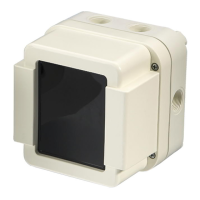
Do you have a question about the Siemens FDL241-9 and is the answer not in the manual?
| Brand | Siemens |
|---|---|
| Model | FDL241-9 |
| Category | Security Sensors |
| Language | English |
Identifies the intended audience for the technical manual, including roles and responsibilities.
Lists all documents relevant to the manual's content and application.
Defines key terminology used throughout the technical manual for clarity.
Provides a log of revisions and updates made to the document over its lifespan.
Outlines critical safety notices, danger symbols, and signal words for user protection.
Details essential regulations and guidelines for the safe installation and operation of the device.
Informs about limitations and specific considerations for different firmware versions.
Introduces the linear smoke detector and its fundamental operating principles.
Describes the components of the detector and the steps for physical assembly.
Explains how the linear smoke detector works, detailing its operation with and without smoke.
Lists and describes various optional accessories available for the linear smoke detector.
Outlines typical scenarios and environments where the linear smoke detector can be effectively used.
Provides fundamental guidelines and considerations for planning the detector's installation.
Specific planning advice for installing detectors in rooms featuring flat ceilings.
Specific planning advice for installing detectors in rooms featuring inclined ceilings.
Guidance on choosing appropriate reflectors based on the required detection distance.
Procedure for configuring the detector for collective operation mode.
Detailed steps for securely installing the detector base onto the mounting surface.
Instructions for correctly wiring the detector and its associated components.
Instructions for mounting the specific prism reflector for long-distance applications.
Instructions for mounting foil reflectors for mid-range and short-range detection.
How to configure the detector's operating parameters using DIP switches or a control panel.
Steps for physically mounting the main detector unit onto its prepared base.
Guide on connecting and using the specialized adjustment device for setup.
Procedure to verify signal strength and distance readings during the commissioning process.
The final setup step to finalize the detector's configuration after optical alignment.
How to perform a performance check and test the detector's alarm functionality.
Annual procedure for verifying the detector's operational status and detecting faults.
Instructions for safely cleaning the detector's protective hood and optical components.
A guide to diagnosing and resolving common faults and issues with the detector.
Comprehensive technical specifications including electrical, environmental, and operational parameters.
Provides the physical measurements for the detector base and various reflector types.
Details on materials used, environmental compliance, and proper disposal procedures.